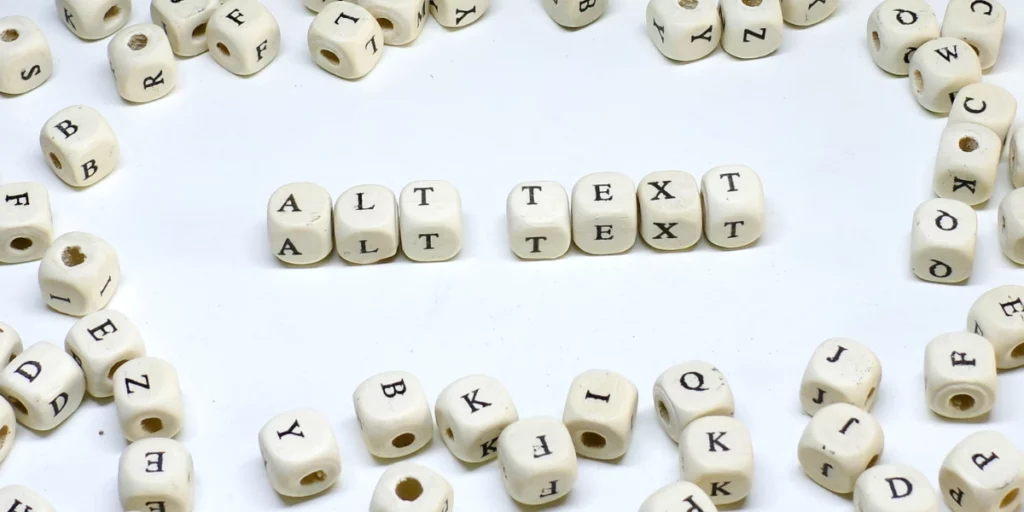In the constantly evolving world of social media, where visual content is king, the concept of inclusivity extends beyond just words, to encompass the very images, graphics, and videos that populate our feeds.
Designing with accessibility in mind is not just a moral imperative; it’s a fundamental step towards creating a digital space that welcomes everyone, regardless of their abilities. Just as the physical world has made strides to invite and include people with disabilities in all areas, so too should this be the case on social media and the Internet as a whole.
And as a brand, business, or digital marketer who publishes content on social media daily, you need to position yourself at the forefront of this change.
In this guide, we’ll explore the intricacies of designing for inclusivity in your social media content, looking at concrete steps to ensure a more accessible and user-friendly online environment.
Understanding Accessibility in Design
Making your social media content accessible to all on social media extends beyond just using large text and easy-to-understand graphics. There’s a whole host of things to consider when creating content to allow everyone in your audience – regardless of their individual needs and requirements – to enjoy.
Below, we’ve broken down creating accessible social media graphics into a few different sections, to help you navigate to the areas in which you immediately need help. These include colours, typography, accessibility tools, and more.
Colour Considerations

Colour plays a pivotal role in graphic design, but it can also pose challenges for those with visual impairments. These impairments can include things like colour blindness, myopia (near-sightedness), hyperopia (farsightedness), and a plethora of other conditions.
Use High Contrast Combinations
Ensure a clear contrast between text and background colours to aid readability. You should look to pair bold and clear colours when including text in your designs. This means avoiding light colours, as these can often become lost when used for text.
Planning for Colour Vision Impairment
Deuteranomaly is a form of colour blindness that affects a person’s ability to distinguish red from green. It’s for this reason that you should avoid pairing these two colours in conjunction with one another.
However, Deuteranomaly isn’t the only form of colour vision deficiency. So, we highly recommend testing your content to see how it will be seen by people with various forms of colour vision impairments.
Coblis is a colour blindness simulator. It allows you to upload an image and apply a filter which will show you how it will be seen by people with Red-Weak/Protanomaly (red-weak), Deuteranomaly (green-weak), Tritanomaly (blue-weak), and various other known forms of colour blindness. You should aim for your content to be easily readable for all forms of colour vision deficiency.
Minimal Designs
Simplicity is key. Minimalistic designs not only enhance aesthetic appeal but also contribute to a more accessible user experience. The fewer elements you have in your content, the greater the chance you have of everyone being able to read and enjoy it.
Clear Hierarchy
Maintain a clear visual hierarchy to guide users through the content effortlessly. You can do this by appropriately scaling text, starting from large to show important headings, and then gradually lowering the font size to show descending levels of importance.
This allows people to easily see where their attention should be placed within the design. For those with dyslexia, clear and large typography is essential.
You can check out our full guide for creating hierarchy in social media content here.
Limited Distractions
Minimize unnecessary elements that may distract from the core message. We said above that simplicity is key. And that is the truth. With content that’s chock full of images, graphics, and other elements, those with ADHD (among others) will have trouble knowing where to place their attention.
That’s why, when creating anything, you should stick to only the primary information you want to get across to your audience. Small branding elements are fine to include, but you should ensure they don’t distract from the content.
Alternative Text

Adding alternative text (alt text) to images is a fundamental practice in making visuals accessible. For visually impaired people who are using screen readers (a narrator that reads out the content of a webpage to the user), alternative text is vital.
Without written descriptions of the images on the page, a screen reader will be unable to tell the user what the image is. This potentially limits and hinders the experience a visually impaired reader may have with your content.
The best practices for including alternative text in content can be found here. We recommend you read through that guide before adding alt text to your content, as it provides an incredibly helpful set of rules to ensure you’re doing it correctly.
Typography & Readability
There’s a good chance that the majority of the content you post on social media will be text heavy. This is natural, and something we’re all used to doing – especially when not creating a video.
The downside to this is that a lot of people with impairments – like ADHD, dyslexia, and more – will have trouble reading text. This means that the fonts and typefaces you use will have a huge impact on the overall legibility of your content.
Font and Text Size
Choosing the right fonts and adjusting text size can vastly improve readability. A good rule of thumb is to never drop below 12pt for body text. For those with vision difficulties, reading small text can be an almost impossible task.
The W3C Group published Web Content Accessibility Guidelines 2.0, which is a set of rules and guidelines to help you ensure the content you’re creating is accessible for all. They stipulate that body text should be able to be enlarged to 200% of its original size. It’s for this reason that 12pt fonts, as mentioned above, are a good baseline.
Accessible Fonts
Opt for fonts with clear distinctions between characters, as in many cases, these have been designed with accessibility in mind. In addition, the clear distinctions between characters ensure that those will dyslexia and other reading-based impairments will find it easy to distinguish between the letters and numbers in your content.
A good rule to follow is that you should only use widely accessible fonts in your content. Doing this ensures that everyone will a) have experience reading content in a selected typeface, and b) have the font available on their device.
There are also a handful of fonts designed to be accessible. Tiresias and OpenDyslexic are good examples.
Conclusion
Inclusivity is not an afterthought; it’s a core principle that shapes the digital experiences of millions. Designing for accessibility involves a comprehensive approach, incorporating thoughtful colour choices, minimalistic designs and typographic considerations.
By embracing these practices, content creators contribute to a more inclusive online world where everyone can engage with content seamlessly, regardless of their abilities. When creating accessible content, it’s also vital that you have a mobile-first approach.






